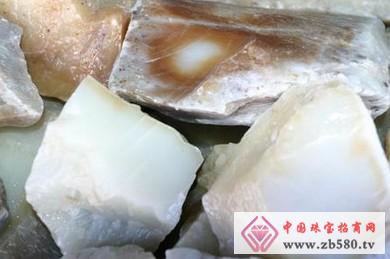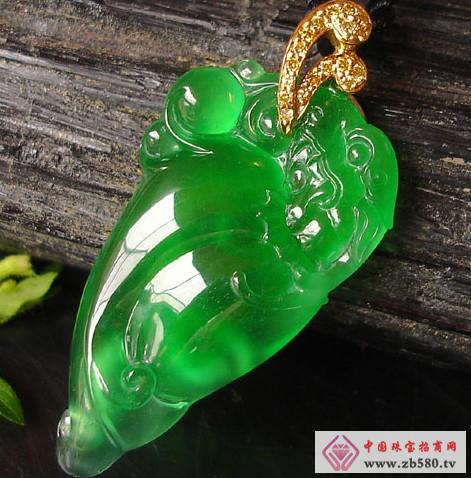Today Xiaobian tells everyone that Hetian jade has different knowledge. I think everyone is very familiar with Hetian jade, but the more familiar things are, the easier it is for everyone to doubt it. Of course, it will not avoid the occurrence of fake goods. I hope that through the following introduction, you can get an idea of ​​the knowledge of Hetian jade, let's take a look.

I. Hetian jade
1. The concept of Hetian jade:
The nephrite referred to here is generally Hetian jade in the usual sense. Hetian jade is distributed in Xinjiang Shache - Tashkurgan, Hetian - Yusong, and the northern slope of the Kunlun Mountains, which is 1,500 kilometers long in Qiemo County. There are nine production areas. The mineral composition of Hetian jade is dominated by tremolite-yangshi. It also contains traces of diopside, serpentine, graphite, magnets and other minerals. Hetian jade has been divided into two kinds of mountain products and aquatic products since ancient times. The aquatic product is called Ziyu, and the mountain is called Baogaiyu. According to the different conditions produced by Hetian jade, the local jade people are divided into three types: mountain material, mountain water and child jade. Most of the pictures below are from Yayuan Yudao and other websites.
The mountain material is also known as Shanyu, or Baogaiyu, which refers to the primary ore produced on the mountain. The characteristics of the mountain material are that the size of the block is different, it is angular, and the quality is often not as good as the jade.
Mountain water refers to the original ore that has been weathered and collapsed, and is transported by river water to the jade in the upper reaches of the river. It is characterized by its proximity to the primary ore, large block size, slightly rounded corners and smooth surface.
Ziyu is also known as Ziyu, which refers to the jade that the primary ore is transported to the river by erosion. It is characterized by a small block size, often oval, and a smooth surface. Because of long-term handling, scouring, sorting, Ziyu is generally of good quality.
Then how do we generally judge, the general standard is: colorless and skinless for the mountain material, colored and leather for the material.

2, Hetian jade varieties:
According to jade color, Hetian jade can be divided into five major color systems: one white, two yellow, three blue, four ink, and five sugar. Most are monochromatic jade, and a few have variegated colors. The jade is translucent and has a fatty luster after polishing. The economic value of Hetian jade is based on color and texture purity. Its main varieties are:
1) White jade: contains more than 95% of tremolite, the color is white, the texture is pure, delicate, shiny and moist. It is a high-quality variety for Hetian jade.
2) Sheep fat white jade: the top grade in white jade, the texture is pure and delicate, containing 99% of the fluorite, and the color is white and gelatinous. The same weight jade material, its economic value is several times that of white jade, such as Grade A white A.
3) Qingbaiyu: There is no significant difference between the texture and the white jade. Only the pale green color of the jade color is the third grade jade material of Hetian jade, and the economic value is slightly lower than the white jade.
4) Sapphire: The color is light green, green, gray and white. It is called sapphire. The color is even and the texture is fine. It contains 89% of tremolite and 6% of erectite. It is oily and shiny.
5) Topaz: The matrix is ​​white jade, which is yellow in the gap due to long-term percolation by iron oxide in surface water. According to the change of chromaticity, it is named: dense wax yellow, corn yellow, okra yellow, yellow yellow, egg yolk and so on. The dense sallow yellow and okra yellow are extremely rare, and their value can be matched with sheep fat white jade.
6) Sugar jade: Iron oxide infiltrates into the tremolite to form a different shade of red leather, dark red is "sugar jade", "tiger skin jade", white is slightly pink called "powder jade". Sugar jade often and white jade or vegetarian jade constitute a two-color jade material, which can make "a pretty jade".
7) Ink: The graphite and magnet components in the tremolite are black. Most of the jade is black or gray-black jade with black markings. It is named as "black clouds, light ink, gold whiskers, and beautiful people". The black spot is densely dense and is called pure black, which is higher than other jade varieties. The ink jade has a waxy luster, and it is not suitable for the decoration of the inlaid gold and silver wire because of the uneven color.
8) Jasper: Produced in the Junggar Jade Mine, also known as Tianshan Jasper. It is grayish green, dark green, dark green, and the pure green color is the top grade. There is a difference in the quality of black spots, black spots or jade. Jasper contains more than 85% of amphibole, fine texture, translucent, oily luster, and is a mid-range jade.

Common fake jade on the market:
One is: quartzite jade, white color, fine texture, looks like white jade. In the past, the so-called "Jingbaiyu" is a kind of fine-grained quartzite, the "oil stone" mine evaluated by the geo-mineral department. The particles are very fine, but they cannot be called white jade. The jade hardness of quartzite is higher than that of Tianbaiyu, so it is better than white jade. It shows a stronger glass luster, which can be resolved without instrument detection.
1. Water stone: The main component of this jade is quartzite, which has high hardness, but is brittle and easy to break. The internal structure is granular. The color is pale and the gloss looks dry.
2. Water white jade: It is a kind of Nanyang jade in Henan. It is plagioclase, glass luster, some are very transparent, and also semi-transparent. The handcuffs are lighter, and the whole looks white and black (with gray or blue and blue) Jade is totally different), but when you look closely, you can't find the place where "Wu" is, also called Wubaiyu, which is more common on the stalls.
3. Dongling jade: common Dongling jade is green, also has blue, red, white, and more places of origin. Dongling jade produced in Xinjiang is white, belonging to quartzite, granular structure, strong gloss, slightly lighter weight, east Lingyu is also commonly used to make jade jewelry. The market price of Dongling jade bracelet is about 100-150 yuan, and the small pendant is about 30-50 yuan. The famous stone records have many Guanyin and Buddha of Dongling jade, sometimes green Dongling. Jade is often used to make green jade. Several other jade similar to white jade are rarely used for jewelry, because the value is too low, only used to make large carvings.
The second is: calcite jade, the appearance is similar to white jade. For example, the so-called "Afghanistan white jade" on the market is a jade formed by calcite. It is actually a kind of marble, but the color is very white, translucent, and often carved into cabbage, which symbolizes "hundred wealth." This kind of jade has a very low hardness, and it can be easily recognized by ordinary knives.
1. Marble: This jade color is white, the hardness is low, the gloss is waxy luster, and the internal structure is waterline and stripe.
2. Afghan white jade: Because the white jade of Afghanistan is very fine and uniform, the luster is lustrous, the jade flower is not visible to the naked eye, and it is often used to pretend to be the best white jade or suet jade. The method of identification is very simple, just scrape it with your fingernails. If you can scrape a little white skin, it is not white jade.
The third is: serpentine jade, namely jade jade, produced in Xiuyan County, Liaoning Province. The jade jade has a large output, low hardness, easy to break, and low price. Generally, the transparency is relatively high. It is mainly composed of lake water and green. It is mainly used to pretend to be Tianqing white jade and sapphire. Yellow jade is also common, mainly posing as topaz, jade jade also has white, and jade has cotton wool. Now Xinjiang has also discovered a large number of serpentine jade. Since the hardness of the jade jade is less than 5, the glass can not be moved.
The fourth is: emulsified glass. Circular bubbles of varying sizes are often seen in glassware. As long as you see bubbles, you are definitely not white jade. However, some glass products have no bubbles, so those who do not have bubbles are not necessarily genuine.
Rapier Loom,Custom Rapier Loom,Rapier Loom Spare Parts,Weaving Machinery Parts
shaoxing zhentu trading co;ltd , https://www.zhentutextile.com